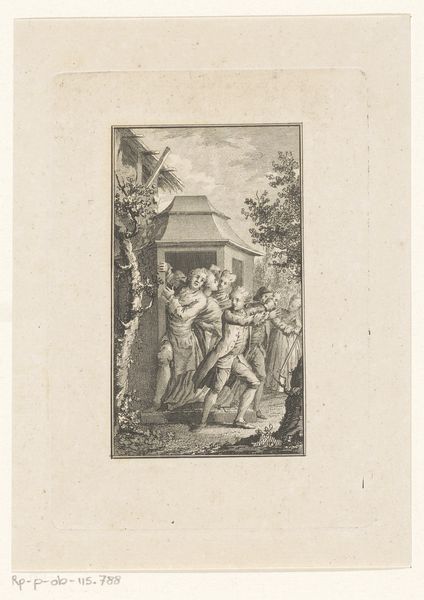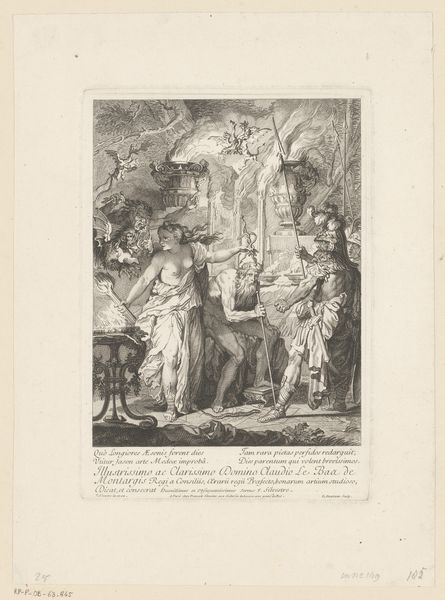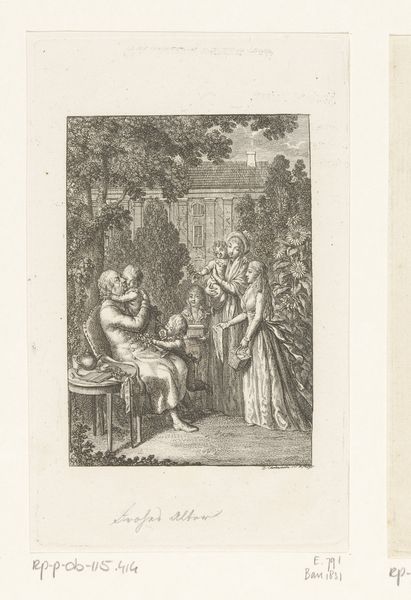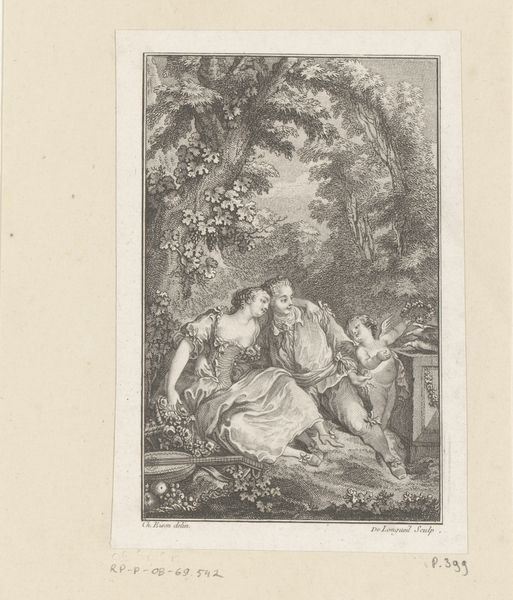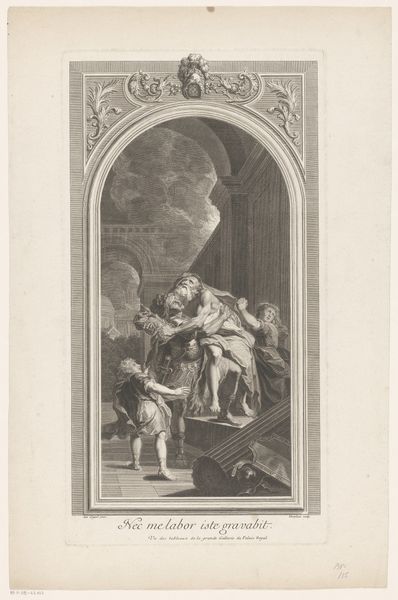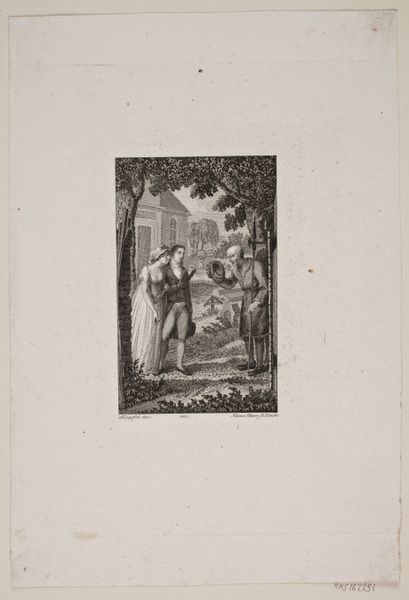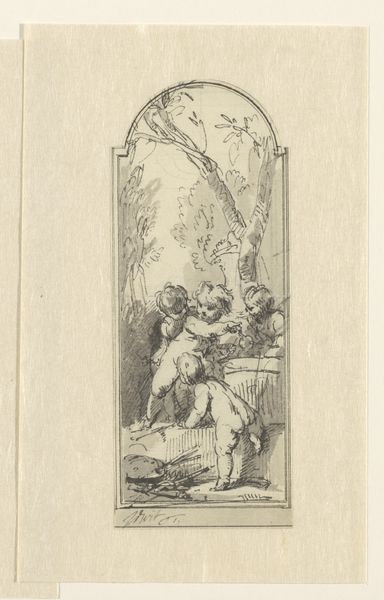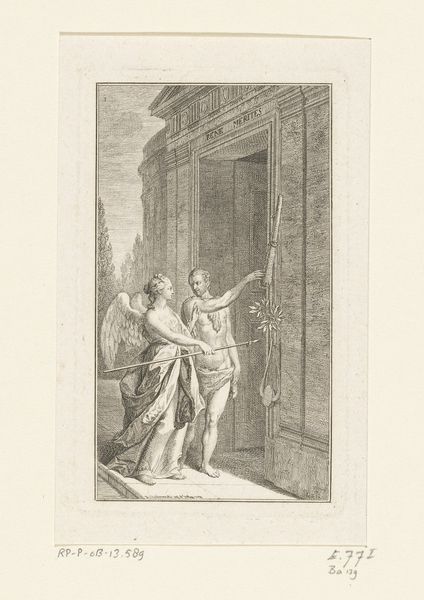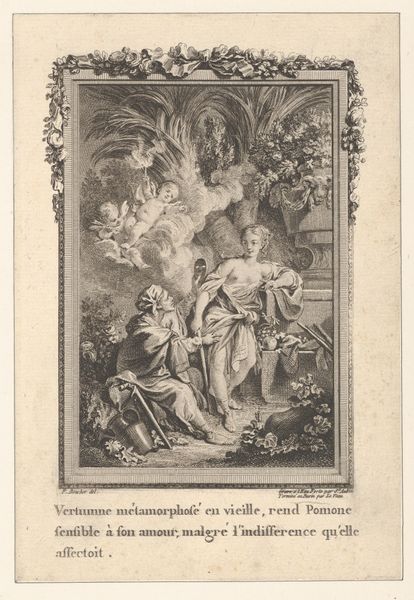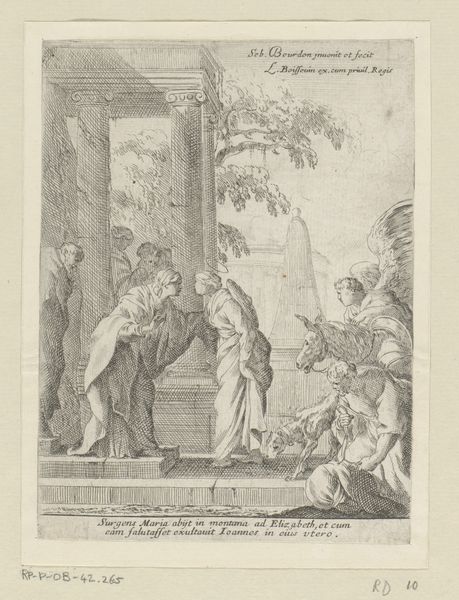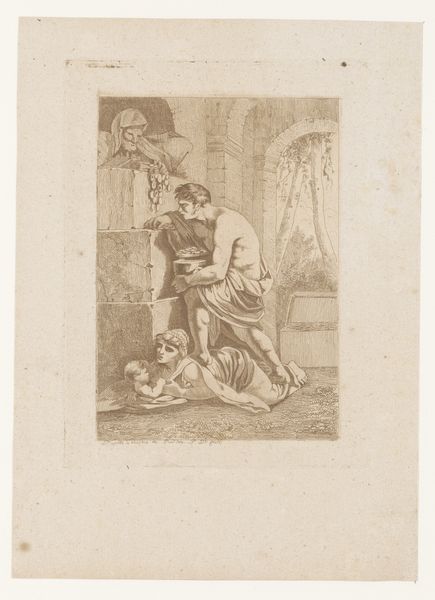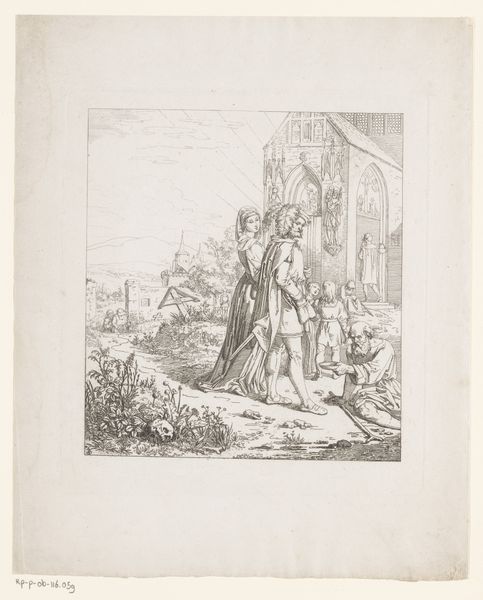
The Coke and Perkin (The Cook's Tale, Chaucer's Canterbury Tales) 1780 - 1800
0:00
0:00
drawing, print, engraving
#
drawing
#
narrative-art
# print
#
genre-painting
#
engraving
Dimensions: Plate: 10 1/2 x 7 15/16 in. (26.7 x 20.1 cm) Sheet: 9 1/4 x 9 15/16 in. (23.5 x 25.2 cm)
Copyright: Public Domain
Editor: This is Francis Chesham's "The Coke and Perkin (The Cook's Tale, Chaucer's Canterbury Tales)," made between 1780 and 1800. It’s an engraving, and there’s something theatrical about the composition. What’s your interpretation of this work? Curator: It’s intriguing, isn't it? Given the timeframe and source material, "The Cook's Tale," consider the prevalent social hierarchies of 18th-century England, and also the context of the Chaucer's tale that is more than 4 centuries older. Perkin is clearly being pushed away, perhaps due to his lower status. What does the woman's exaggerated pose communicate to you about gender roles? Editor: I hadn’t considered it that way. It’s interesting how her body language seems to assert authority in this space. I assumed it was humorous—slapstick almost. Curator: It's a complex negotiation of power, isn't it? Note also that it references older ideas in a time of new revolutionary ones; Chesham situates Perkin, an apprentice with questionable morals in Chaucer, at the threshold of exclusion in an era of societal transformation. Editor: I see what you mean. So, it's less about a simple narrative scene and more about class and gender anxieties. Curator: Precisely. How might we interpret Perkin's dubious character as a reflection of broader concerns regarding social mobility and moral decay during that period? Consider how printmaking allowed wider access to these images— and therefore, to these ideas about power. Editor: So, the print medium amplifies this dialogue about social mobility... It definitely reframes how I initially saw the image. I was focused on the story, but I understand now how crucial it is to view art as connected to historical and political currents. Curator: Indeed! Art is never created in a vacuum. It's through these kinds of contextual readings that we can unearth its most resonant meanings.
Comments
No comments
Be the first to comment and join the conversation on the ultimate creative platform.
